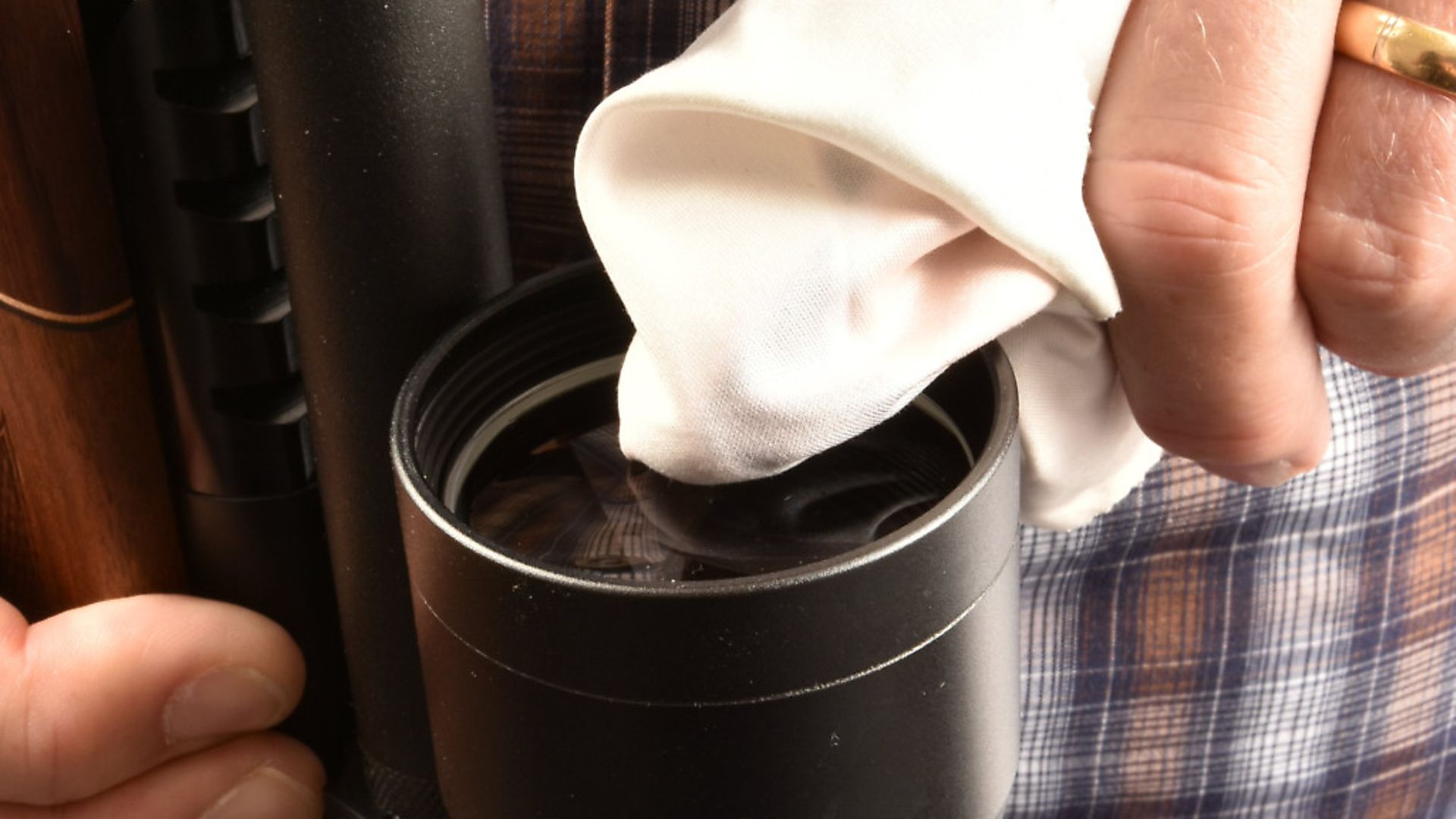The editor shows us how to clean lenses properly
 credit: Archant
credit: Archant
We all love the best scope and binoculars we can afford, but all too often compromise their performance with a simple lack of care. The finest optical glass and high-tech’ coatings can’t give of their best if we leave them covered in muck and dust, so we’re wasting our time and our money if we’re lazy, but there’s another factor at play here. All too often, we’ve been warned that we must not be too aggressive with lenses because we might damage them with poor cleaning techniques. So what is the right way to clean lenses to realise their true performance?
I use the same technique that’s served me well over the last 30 years without causing me any problems, and it’s this; firstly, I only work on dry lenses. If the scope is soaked with rain I leave it in a warm room until I’m confident that it’s properly dried. Next, I use a soft brush to sweep away any dust or grit gently from the surface, and then blow hard on it to evacuate the particles. Once I’m sure this is complete, I squirt a small amount of lens cleaning fluid onto the surface and wipe it with a microfibre cloth to mop up any grease or dirt that remains. This isn’t easy, and you need to take your time to dry the lens with the cloth. There can often be smears and smudges but don’t worry. Apply another small squirt of lens cleaner, find a dry part of the cloth and start again.
A little patience goes a long way here. Rushing will leave you frustrated, so take your time and do a proper job. I always use camera grade cleaning products because our lenses are every bit as precious as the best quality cameras. I like the pen-type cleaning brush that can be easily transported and be found easily in camera shops or on Amazon or eBay. These can be kept in your rifle slip for an emergency clean up in the field.
 credit: Archant
credit: Archant
At home I find a full-size cloth does a better job with much more surface area to absorb the cleaning fluid and dirt. Clearly, the cloths need to be cleaned regularly to do their job properly or you end up just spreading the old dirt around the lens again, and again.
One last little tip from me: a thin smear of silicone grease on the seal of the dust caps can make getting them off later so much easier, rather than struggling against a dry seal.